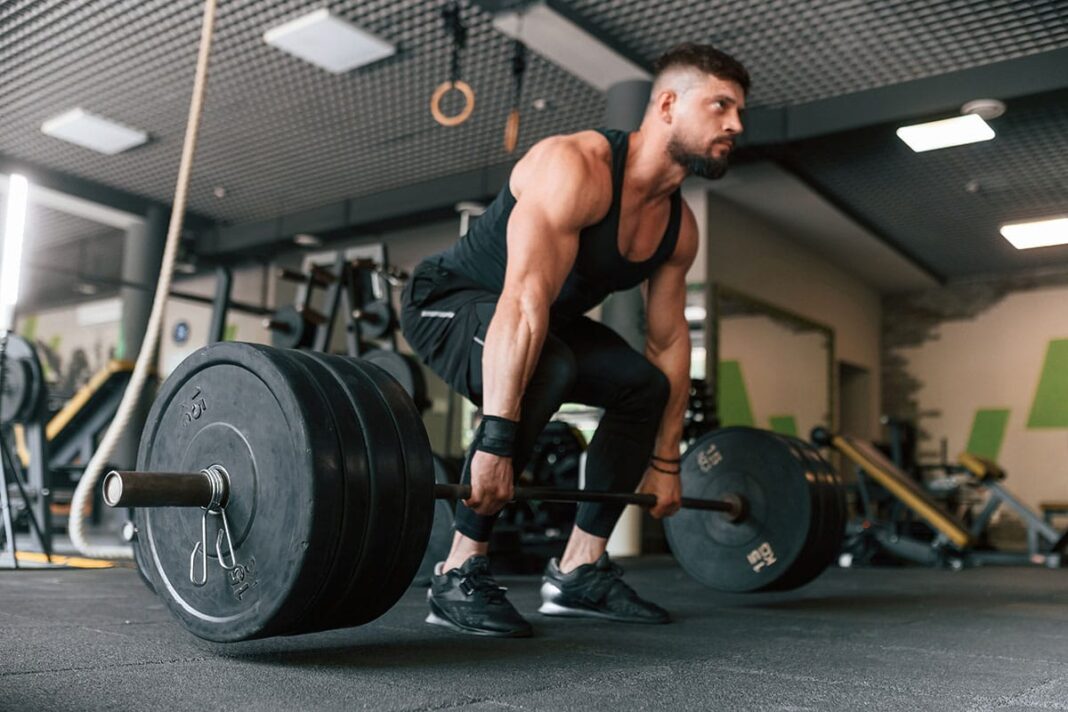Training Frequency: How To Train Each Muscle for Maximum Growth?
If you’ve been following a traditional “bro split” style of training—where each muscle group gets trained once per week—you might be leaving gains on the table.
Hitting chest on Monday, back on Tuesday, legs on Wednesday, and so on might feel familiar and organized, but it’s not necessarily the most efficient way to build muscle or improve strength.
Over the past decade, emerging research and real-world training practices have shifted toward a more evidence-based understanding: training each muscle group two to three times per week is often superior when it comes to muscle hypertrophy, strength gains, and motor skill development.
We’ll explore why training frequency matters, the supporting science behind it, how to apply it based on your experience level, and the best workout splits for maximizing muscle growth without overtraining.
Whether you’re a beginner or an experienced lifter, adjusting your training frequency could be the breakthrough your routine needs.

Why Training Frequency Is So Important
Muscle growth doesn’t happen during your workouts—it happens after, during recovery. However, to trigger that growth, you first need to stimulate the muscles through resistance training. That’s where frequency comes into play.
When you train a muscle, you activate a biological process known as muscle protein synthesis (MPS).
This is your body’s way of repairing and strengthening muscle fibers, and it’s a key part of muscle hypertrophy. However, this anabolic response doesn’t last forever.
A study by Damas et al. (2010) showed that MPS peaks shortly after training but returns to baseline within 48 to 72 hours.
That means if you train a muscle on Monday and don’t hit it again until the following Monday, you’re spending several days with no significant growth stimulus. It’s like planting a seed and then forgetting to water it for a week.
In contrast, training more frequently gives you multiple chances throughout the week to spike MPS, keeping the body in a more consistent anabolic state. The result? More muscle growth over time.
The Science Behind Training Frequency
If we look at the data, the case for increased training frequency becomes even clearer.
📚 Key Studies and Meta-Analyses
- Schoenfeld et al. (2016) performed a meta-analysis of several resistance training studies. Their conclusion? Training a muscle group twice per week led to significantly more hypertrophy than training it just once per week—even when the total weekly volume (sets × reps × load) was the same.
- Grgic et al. (2018) confirmed and extended these findings, suggesting that higher training frequency may also improve strength development. The benefits were most pronounced when total volume was equal, meaning frequency helps distribute effort more effectively, reducing fatigue per session and maintaining quality across all sets.
- Beyond hypertrophy, increased frequency enhances neuromuscular coordination. Performing movements like squats or bench presses more often improves your ability to execute them with efficiency, which can lead to heavier lifts and better form.
Why Total Volume Isn’t Enough Without Frequency
Let’s break this down with a simple example:
Imagine your weekly chest volume is 12 challenging sets. You have two ways to structure it:
- Option A (Traditional Split): 12 sets of chest on Monday.
- Option B (Increased Frequency): 6 sets on Monday and 6 sets on Thursday.
Both scenarios include the same total volume. However, with Option B, you’re training the muscle twice, spreading the effort, likely achieving higher quality reps in each session because you’re less fatigued. Plus, you’re triggering MPS twice, not once.
Over weeks and months, those small advantages accumulate, leading to significantly greater results.

How to Apply Training Frequency in the Real World
How often should you train each muscle? The answer depends on your training experience, recovery ability, and goals. Here’s a breakdown:
🟢 Beginners (0–6 months of training)
- Recommended Frequency: 2–3 full-body sessions per week
- Why: Beginners benefit immensely from frequent practice of compound lifts, like squats, deadlifts, and presses. These movements reinforce motor patterns and help build foundational strength. Plus, they recover faster because their absolute loads are lower.
- Sample Plan:
- Monday: Full-Body
- Wednesday: Full-Body
- Friday: Full-Body
🟡 Intermediates (6–24 months)
- Recommended Frequency: 3–4 training days per week
- Why: As your strength increases, so does the stress on your muscles and nervous system. Hitting each muscle twice a week allows for adequate recovery while continuing to provide regular growth stimuli.
- Sample Plan:
- Monday: Upper Body
- Tuesday: Lower Body
- Thursday: Upper Body
- Friday: Lower Body
🔴 Advanced Lifters (2+ years)
- Recommended Frequency: 4–6 sessions per week
- Why: Advanced lifters can handle more volume and intensity. However, strategic frequency is essential to avoid overtraining and ensure each session adds value. Many advanced athletes rotate focus days, such as heavy/light or strength/hypertrophy variations, across the week.
- Sample Plan:
- Monday: Push (Heavy)
- Tuesday: Pull (Moderate)
- Wednesday: Legs (Heavy)
- Thursday: Push (Light/Hypertrophy)
- Friday: Pull (Heavy)
- Saturday: Legs (Light/Recovery)
Best Training Splits for High Frequency
The good news? You don’t need to live in the gym to train more often. Strategic programming lets you hit each muscle 2–3 times a week without burning out.
Full-Body Split (3–4 Days/Week)
- Every session trains all major muscle groups.
- Great for beginners and busy schedules.
- Easy to auto-regulate—if legs are sore, scale them back and focus on upper body.
Upper/Lower Split (4 Days/Week)
- Alternates between upper and lower body.
- Ideal for intermediates.
- Efficient volume distribution without fatigue buildup in one session.
Push/Pull/Legs (6 Days/Week)
- Push (Chest/Shoulders/Triceps), Pull (Back/Biceps), Legs
- Hits everything twice weekly with more exercise variation.
- Best for advanced lifters with time and recovery ability.
💡 Pro Tip: Regardless of your split, focus on quality reps, progressive overload, and smart recovery strategies. Frequency helps—but only if you’re recovering and progressing.
How This Aligns With Our 4-Day Full-Body Program
Our 4-day full-body workout plan embodies this frequency-first philosophy. Each session targets all major muscle groups but with rotating emphases—ensuring diverse stimuli while allowing for sufficient recovery.
Here’s how it works:
- Day 1: Strength Focus (Lower + Upper Compound Lifts)
- Day 2: Hypertrophy Focus (Moderate Reps, Isolation Movements)
- Day 3: Recovery + Core (Mobility, Light Lifting)
- Day 4: Conditioning + Volume (Circuits, Finishers)
This approach lets you:
- Stimulate muscle groups 2–3 times per week
- Avoid overtraining by managing fatigue through focus shifts
- Get more quality volume per muscle over the week
It’s the ideal blend of efficiency, variety, and evidence-based programming.
👉 Want to see it in action? Check out the full plan:
The 4-Day Full-Body Workout: A Smarter Way to Build Muscle and Strength
Final Takeaways
If your training has hit a plateau or you’re not seeing the gains you expected, it might not be your intensity or your diet—it could be your training frequency.
🔑 Here’s What to Remember:
- Train each muscle group at least twice per week for optimal muscle growth and strength.
- Total weekly volume matters, but spreading that volume across multiple sessions yields better quality and recovery.
- Use smarter training splits—like full-body or upper/lower—to maximize frequency without overwhelming your schedule.
- Recovery is still essential. Increased frequency doesn’t mean doing more volume in each session. It means dividing volume more intelligently across the week.
🚀 Make the Shift
Move away from the “once-a-week blast” mentality. Embrace a “stimulate, recover, repeat” cycle. Small changes in frequency, intelligently applied, can lead to significantly better results over time.
Ready to level up your training? Adjust your schedule, hit those muscles more often, and start unlocking your full potential in the gym.
References:
[1] Damas, F. et al. (2010). “Do muscle hypertrophy and strength gains occur early or later during resistance training?” Scandinavian Journal of Medicine & Science in Sports.
[2] Schoenfeld, B. et al. (2016). “Effects of resistance training frequency on measures of muscle hypertrophy: a systematic review and meta-analysis.” Sports Medicine.
[3] Grgic, J. et al. (2018). “Effects of resistance training frequency on measures of muscle hypertrophy: a systematic review and meta-analysis.” Sports Medicine.




